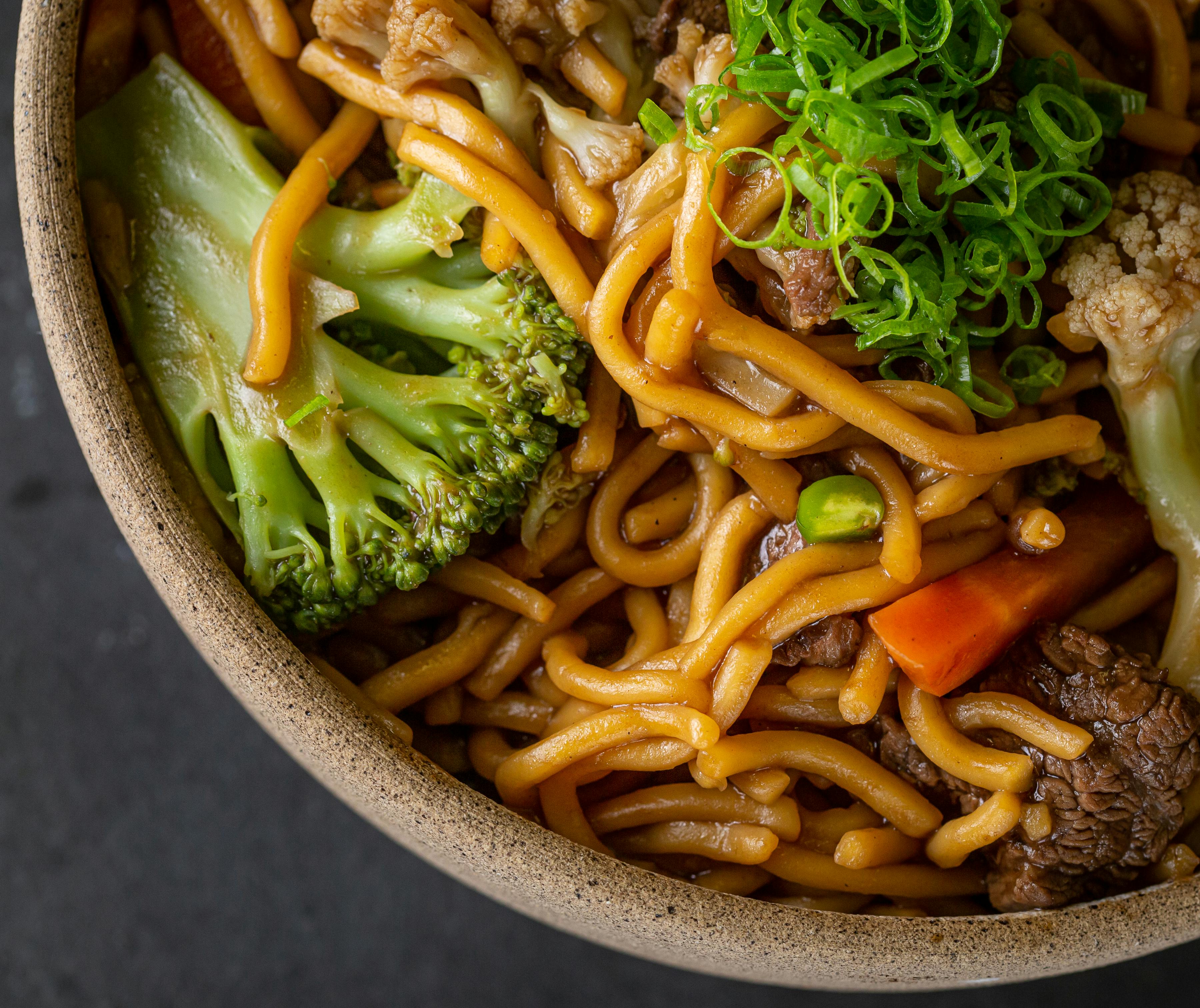
Lo Mein is a favorite in many households, and for good reason. The savory, umami-filled noodles are a comfort food staple across the globe. But have you ever wondered how to create this delightful dish in your own kitchen? This comprehensive guide will walk you through everything you need to know about crafting the perfect Lo Mein at home.
Delving into Lo Mein
Lo Mein is a beloved noodle dish, popular in both restaurants and home kitchens. The name “Lo Mein” comes from Cantonese and Mandarin languages, meaning “mixed noodles”. In essence, it’s a dish of egg noodles mingled with sauce, not dissimilar to Chow Mein but with its own distinct characteristics.
In North America, the term Lo Mein is often used to describe the Americanized Chinese takeout style of noodles: somewhat thick egg noodles stir fried and tossed with a soy-based sauce, vegetables, and proteins.
Types of Lo Mein
There are two primary versions of Lo Mein, each with its own unique charm:
- Cantonese Lo Mein: This style is essentially a deconstructed soup noodle dish. It features thin and chewy egg noodles served on a plate with toppings and a separate bowl of soup. The sauce for the noodles isn’t mixed in; instead, you stir it into the noodles yourself. In Cantonese, “Lo” means to mix or stir, while “Mein” refers to noodles.
- American Chinese Lo Mein: This version is a stir-fried noodle dish featuring thick noodles mixed with a soy sauce-based sauce and toppings like beef, pork, chicken, or vegetables.
Both styles are delightful in their own ways and offer a unique Lo Mein experience.
Lo Mein Vs Chow Mein
While both dishes involve noodles and are staples in Chinese cuisine, the primary difference between Lo Mein and Chow Mein lies in the noodles used. Lo Mein noodles are thicker and chewier, while Chow Mein noodles are thinner and crisper. Chow Mein noodles are cooked longer in the pan, allowing them to become crispy. In contrast, Lo Mein noodles are simply tossed, allowing them to remain soft.
Lo Mein Noodles
To make an authentic Lo Mein dish, you will need the right kind of noodles. Here are some options:
- Fresh Pre-Cooked Lo Mein Noodles: These can typically be found in the refrigerated section of your local Asian grocery store. They are also known as oil noodles and since they are already cooked, you simply need to rinse and drain them before using.
- Fresh Uncooked Lo Mein Noodles: These can also be found in the same section of your grocery store. You will need to cook them according to the package instructions and drain thoroughly before using.
- Spaghetti: If you can’t find Lo Mein noodles, you can easily substitute spaghetti or any other long pasta.
Crafting the Perfect Lo Mein Sauce
The sauce is a crucial element that brings the Lo Mein dish together. It’s a delightful blend of light and dark soy sauce, toasted sesame oil, sugar, and a hint of ginger. You can make a batch of this sauce and store it in the fridge, ready to be used whenever you crave Lo Mein.
In a large measuring cup, mix together:
- 1/2 cup light soy sauce
- 1/4 cup dark soy sauce
- 1 tbsp plus 1 tsp toasted sesame oil
- 1 tbsp plus 1 tsp sugar
- 2 tsp ground ginger
This sauce is vegetarian/vegan-friendly, but if you want to add an extra umami punch, you can add 2 tbsp of oyster sauce to the recipe mentioned above.
Essential Ingredients
Dark Soy Sauce
Dark soy sauce is a thick, dark soy sauce that’s slightly less salty than regular soy sauce. It gets its extra dark color from a longer fermentation of soybeans. Dark soy sauce lends a beautiful glossy brown color to Chinese dishes and also adds a hint of caramel sweetness and depth.
Toasted Sesame Oil
Toasted sesame oil is another key ingredient that adds a distinct nutty, toasty, and umami-filled flavor to the dish. It’s important to note that toasted sesame oil is entirely different from regular sesame oil.
Adding the Perfect Mix-Ins
One of the best things about Lo Mein is its versatility. You can add virtually anything to it and it will taste fantastic. Any and all proteins and vegetables are welcome. Just remember to cut everything into bite-sized pieces.
Velveting Meat
If you decide to add meat to your Lo Mein, you may want to employ the Chinese technique of velveting. This method involves marinating meat with cornstarch, oil, and seasonings, which helps to tenderize and season the meat. The cornstarch creates a small barrier against heat, ensuring the meat stays juicy when cooked.
Spicing Up Your Lo Mein
If you prefer a kick to your noodles, you can add 1-2 tsp of your favorite hot sauce into the Lo Mein sauce. Chili oil or chili crisp are great options for this.
Benefits of Homemade Lo Mein
- It’s quick and easy to prepare. In fact, it can be faster than ordering takeout. Plus, it’ll be fresher and hotter.
- The ingredients are simple and easily accessible.
- You have the freedom to add anything you want to it. You can even use it as an opportunity to clear out leftover veggies from your fridge.
- The sauce is versatile and can be used in other dishes as well.
Frequently Asked Questions
What kind of noodles should I use?
You can use oil noodles, spaghetti, or any other long pasta of your choice.
Are Lo Mein noodles gluten-free?
Traditional Lo Mein noodles aren’t gluten-free but you can make the recipe with rice noodles, which are gluten-free.
Why do I need two types of soy sauce?
The combination of dark and light soy sauce makes this recipe shine. The light soy sauce adds saltiness and umami, while the dark soy sauce adds a glossy color, a touch of caramel sweetness, and depth.
Serving Suggestions
Lo Mein can be served with a variety of dishes like Sesame Chicken, Potstickers, Garlicky Gai Lan, Spicy Wonton, Honey Garlic Pork Ribs, and General Tso’s Chicken. Enjoy your homemade Lo Mein and happy noodling!
“Food is not about impressing people. It’s about making them feel comfortable.” – Ina Garten
Final Thoughts
Creating a delicious Lo Mein dish at home doesn’t have to be intimidating. With this comprehensive guide, you can now create your own versions of this beloved dish right in your own kitchen. Whether you’re a fan of the Cantonese style or the American Chinese takeout style, the key to a great Lo Mein is in the quality of the ingredients and the love you put into making it. Enjoy the process, and most importantly, enjoy your homemade Lo Mein!
